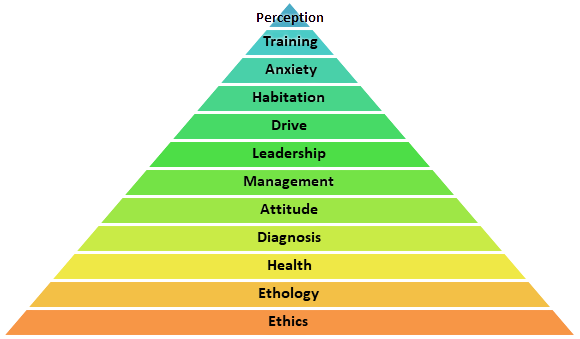Introduction to Constructional Aggression Treatment (CAT)
Constructional Aggression Treatment (CAT) is a behavior modification technique used in dog training to address aggressive behaviors. The method was developed by Jesus Rosales-Ruiz and Kellie Snider at the University of North Texas in the early 2000s. The premise of CAT is to alter the aggressive dog's emotional responses to stimuli (typically other dogs or humans) by using negative reinforcement in a structured setting.
Key Concepts of CAT
- Negative Reinforcement: CAT utilizes negative reinforcement, a process by which an aversive stimulus is removed when the desired behavior is displayed. In the context of CAT, the aversive stimulus is typically the presence of the trigger (e.g., another dog). When the aggressive dog shows calmer behavior or any behavior other than aggression, the trigger is removed, which decreases the likelihood of aggression over time.
- Functional Assessment: The treatment begins with a functional assessment to identify the specific triggers and situations that elicit aggression from the dog. This includes understanding the immediate environment, the dog's history, and the specifics of the aggressive encounters.
- Systematic Exposure: Dogs are exposed systematically to their triggers in a controlled environment. The trigger (another dog or a human) approaches the aggressive dog. If the aggressive dog exhibits non-aggressive behavior, the trigger retreats, thus removing the pressure or threat.
- Incremental Progress: The proximity of the trigger is gradually increased as the dog learns to respond with less aggression and more acceptable behavior patterns. This is done very carefully to avoid overwhelming the dog and to ensure a gradual adjustment in the dog’s emotional response.
Comparison to Traditional Counter-Conditioning and Desensitization
Counter-Conditioning and Desensitization:
- Objective: To change the dog's emotional response to a stimulus by associating the presence of the stimulus with something positive (like treats or toys), thereby attempting to replace fear or aggression with a more desirable emotion like pleasure or calm.
- Method: The dog is exposed to the trigger at a low level that does not elicit the aggressive response, while simultaneously being given a positive stimulus. Over time, the level of the trigger exposure is gradually increased while the dog continues to change their initial association to the trigger.
Differences:
- Type of Reinforcement: Traditional methods mainly use positive reinforcement (introducing a pleasant stimulus), whereas CAT primarily employs negative reinforcement (removing an unpleasant stimulus).
- Focus on Behavior vs. Emotion: While both techniques aim to change emotional responses, CAT also emphasizes the removal of the aggressive responses through negative reinforcement, directly targeting the behavior itself.
- Dynamics of Trigger Interaction: CAT involves an active role of the trigger (approaching and retreating), unlike traditional methods where the trigger’s behavior is generally disassociated with the dog in training.
Similarities:
- Both methods require careful control of the environment and stimuli.
- Both aim to decrease aggression and improve the dog’s emotional response to triggers.
- Gradual exposure is a central tenet in both approaches, ensuring the dog is not overwhelmed.
Considerations Using Foundation Style Dog Training

Ethology and Diagnosis: Understanding breed tendencies and body language is important to know if CAT procedures are a valid technique for a case. Typically, CAT procedures will only be effective on purely defensive dogs who have a true motivation to scare away a target with no intention of physically engaging with the target. Dogs motivated by barrier frustration, predatory behavior, or fight drive may simply get more frustrated by removing a target they desire to interact with.
Training: CAT procedures originally gained popularity among the niche of "purely positive" dog trainers who did not train their dogs to a "true obedience" level where a sense of obligation exists with the dog to obey the handler.
Without a degree of obedience, CAT procedures may require an unreasonable amount of repetition to achieve results or may not progress to a point during training sessions that bring the dog to functional proximity to what the dog would encounter in day-to-day life.
Perception: CAT is not technically a method of changing how a dog feels about a situation, such as counter-conditioning, since it focuses on removing a trigger of concern when the dog behaves in a certain way (more akin to training). However, the repetitive nature of the drills may assist in desensitizing a dog to certain triggers, and counter-conditioning methods can be used simultaneously during the drills, which ultimately can change the perception of these situations to the dog in training.
Conclusion
Understanding the differences between CAT and traditional Counter-Conditioning procedures may help guide a trainer's decisions when making a plan.
Because of the real-life limitations of CAT procedures, it will usually be most effective for the trainer when built upon a foundation of obedience with purely defensive dogs.


How about BAT training definition?
You need to login in order to like this post: click here
Fine-tuning that article. In the pipeline very soon.
You need to login in order to like this post: click here
Was thinking about that myself! BAT opposite of CAT 😉
You need to login in order to like this post: click here